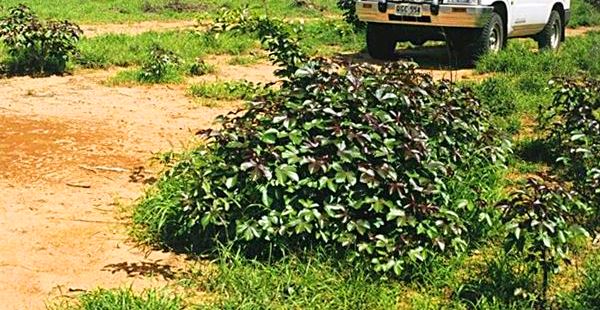Aruba is a highly demanded tourist destination with a fragile ecosystem on a very small piece of earth, but it has thousands of years of human history and millions in geological terms. Our native heritage teaches us to love and respect our roots, and our greatest desire is to protect and preserve them. Here is where the objective of this blog comes to mind: educating our readers about Aruba’s cultural heritage.
The use of plants for medicine dates back to ancient civilizations, and their use were also common during the Middle Ages. During the 19th and 20th centuries, popular knowledge of medicinal plants was passed from generation to generation, the practice being attributed mainly to women healers, who applied plants and herbs to treat common diseases and ailments.
Plants were considered the main source from which to extract healing powers due to their chemical compositions contained in their leaves, flowers, stem or root, fruits and sap. While for thousands of years, the cultures of the ancient world experimented with the healing power of plants. Today we see that medicinal plants and ancestral knowledge are an intricate part of pharmaceutical research, whether for the benefit of humanity or the contrary.
Restoring life powers and health is essential to the survival of any group. Through different methods of preparation, potions are prepared that in many cases are still applied to treat various ailments. This could be anything from a simple headache to more serious ailments.
For an infusion, the active ingredients of the plant are dissolved in water by boiling it in to a drink. If it needs to be applied to an external affected area, the part of the plant that contains the healing properties is crushed and applied. A direct way to ingest certain medicinal herbs is to eat them, for example, in a salad, like a tea or mixed into a syrups or honey. Plants can also be mashed in to a mortar mixed with oils of certain seeds in order to be applied on wounds or skin diseases.
In Aruba, a wide variety of medicinal plants have been applied to treat diseases by our ancestors and that we currently continue to use, such as the leaf sap and roots of Seida to relieve sore throats or skin problems* Jatropha gossypiifolia. The roots are cleaned and boiled using the water, once it has cooled down, as a gargle. Results are immediately and are excellent, achieving great relief from the uncomfortable sore throat.
Jatropha gossypiifolia, commonly known as “seida” is a species of flowering plant in the spurge family, Euphorbiaceae. This species is most commonly found in drier tropical environments, but is sometimes also naturalized in subtropical and semi-arid regions. It is a weed of degraded pastures, open woodlands, monsoon vine forests, grasslands, riparian vegetation, coastal foreshores, roadsides, disturbed sites, waste areas and old or abandoned gardens.
The species is native to Mexico, South America, Gujarat State (India) and the Caribbean islands. It grows to 2.5 to 4 m high. The three lobed leaves are purple and sticky when young and become bright green with age. The small red flowers with yellow centers appear in clusters. There are many common names for Jatropha gossypiifolia including: bellyache-bush, black physic nut, and cotton-leaf physic nut cotton-leaf jatropha or wild cassava in English, pinon negro, pinon colorado, and tua-tua in Spanish; medicinier noir and medicinier rouge in French; mamoninha and peao-roxo in Brazil, etc.
Another plant that is often used for asthma is Datura metel, commonly known in our Papiamento language as “Yerba Stinki *”. Oddly enough, the popular story tells that the leaves of this plant are smoked to cleanse the lungs.
Now, if you love to know everything about Aruba, do something off the “tourist grid” and surprise yourself by visiting Etnia Nativa, a private residential museum and unique place that introduces you to an authentic glimpse of the island’s native cultural heritage.
Since 1994, Etnia Nativa has been the home of Anthony, a native artist and “Island-Insight” blogger who guides each visitor through resplendent collections from his family heritage dating back to 1640, when the Dutch occupation began. Visit it, feel the true native effect and surprised with his top Aruba’s level knowledge!
R.S.V.P. WhatsApp +297 592 2702 or mail etnianativa03@gmail.com.

















